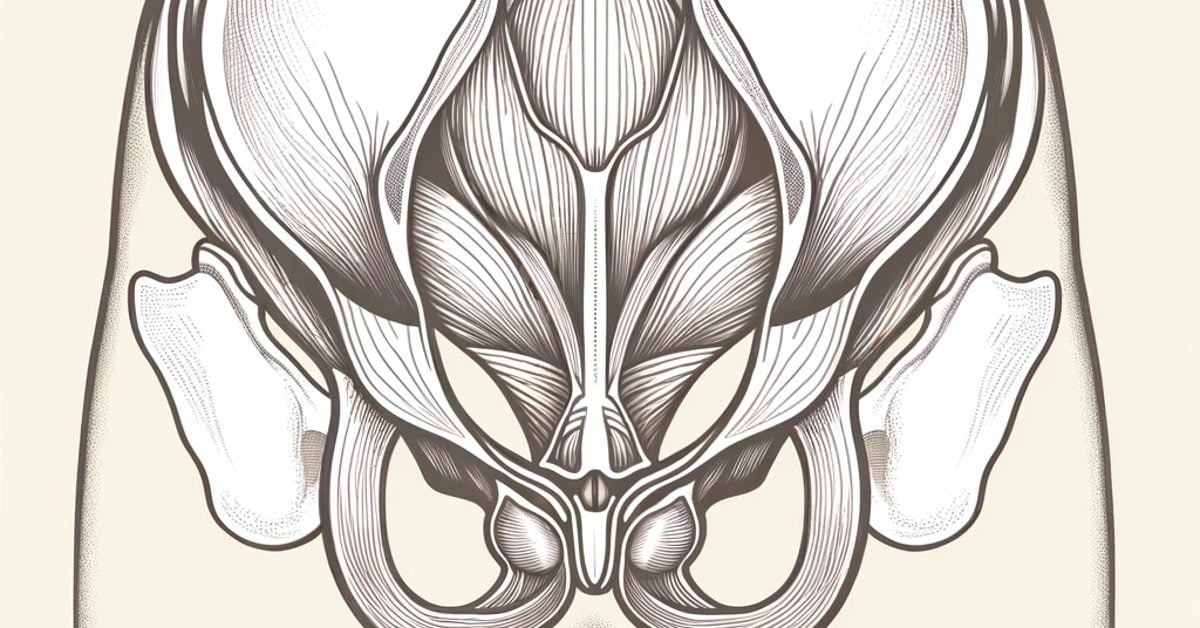Kegel Exercises for Men
Kegel exercises, also known as pelvic floor exercises, are often associated with women, particularly in the context of pregnancy and childbirth. However, these exercises are equally important for men, offering a range of health benefits that are both preventive and restorative.
Kegel exercises for men are a form of pelvic floor muscle training that can be beneficial for improving bladder control and sexual function. These exercises involve contracting and relaxing the pelvic floor muscles, which can help strengthen them over time. This can be particularly helpful for addressing issues like urinary incontinence and erectile dysfunction. Regular practice of Kegel exercises can lead to improved muscle strength and function in the pelvic area.
What Do Kegel Exercises Do for Guys?
Kegel exercises, named after Dr. Arnold Kegel, who first recommended them for women, have gained significant attention for their benefits in men’s health as well. The pelvic floor muscles, a network of muscles stretching from the pubic bone to the tailbone, play a crucial role in the functioning of the pelvic organs. Here’s a closer look at the benefits of Kegel exercises for men:
Improved Bladder Control
Men may experience urinary incontinence due to various reasons, including ageing, surgery, obesity, or certain health conditions. Kegel exercises strengthen the muscles of the pelvic floor, providing better support for the bladder. This increased strength can help prevent involuntary leakage of urine, especially in cases of stress incontinence, where activities like lifting, coughing, or sneezing increase abdominal pressure and cause accidental urine leakage.
Reduced Risk of Incontinence
- As men age or undergo procedures like prostate surgery, the risk of incontinence increases. Regularly performing Kegel exercises can not only reduce the risk but also be part of a post-operative recovery programme to regain bladder control sooner.
Enhanced Sexual Performance
- Strong pelvic floor muscles contribute to erectile rigidity and the prevention of blood from leaving the penis, which can improve erectile function. Moreover, by providing men with greater awareness and control of their pelvic region, Kegels can help manage symptoms of erectile dysfunction and premature ejaculation. Improved control over these muscles can delay ejaculation, potentially extending the duration of intercourse.
Management of Prostate Health
- Men who suffer from symptoms associated with benign prostatic hyperplasia (BPH), such as urinary frequency and urgency, may find relief by performing Kegel exercises. These exercises can help by alleviating some of the uncomfortable urinary symptoms associated with prostate problems.
Support for Pelvic Organ Prolapse
- Although less common than in women, men can also suffer from pelvic organ prolapse, particularly after radical prostatectomy. Kegel exercises can help by strengthening the muscles that hold the pelvic organs in place, potentially preventing the descent of these organs into the lower pelvic area.
Improved Bowel Control
- The pelvic floor muscles are also involved in bowel control. Strengthening these muscles can help prevent the involuntary passage of stool, known as faecal incontinence.
Overall Pelvic Health
- By improving blood circulation to the pelvic region, Kegel exercises can also boost overall pelvic health. Increased blood flow can facilitate healing post-surgery and may improve the overall function of the pelvic organs.
How to Perform Kegel Exercises
To reap these benefits, it is crucial to perform Kegel exercises correctly. The first step is to identify the right muscles, which can be done by trying to stop the flow of urine mid-stream. Once the pelvic floor muscles are identified, men can perform Kegels by contracting these muscles for a count of three to five seconds, then relaxing for a count of three to five seconds. It’s recommended to do a series of these contractions three times a day, gradually increasing both the duration of contractions and the number of repetitions.

What are the reasons why a man might prefer Kegel exercises over or along with medications and other treatments?
Non-invasive: Kegel exercises are non-invasive and can be performed discreetly at any time and place. Unlike surgery or some other medical procedures, there is no recovery time or risk of infection.
- No Medication Side Effects: Medications can often come with side effects, which some men may wish to avoid. Kegel exercises do not introduce any foreign substances into the body and thus have no risk of the systemic side effects that can occur with medication.
- Cost-effective: Kegel exercises require no special equipment and can be done for free, making them a cost-effective option compared to medications and other treatments, which can be expensive, especially over time.
- Empowerment and Control: Engaging in Kegel exercises can give men a sense of control over their health. It empowers them to actively improve their conditions through their own efforts.
- Long-Term Health Benefits: Kegel exercises not only help with the specific conditions mentioned but also contribute to the overall health of the pelvic region. They can improve blood flow and nerve function, which are beneficial for long-term pelvic health.
- Complementary to Other Treatments: Kegel exercises can be used in conjunction with other treatments to enhance their effectiveness. For example, after prostate surgery, Kegels can complement the healing process and help restore bladder control more rapidly.
- Prevention: By strengthening the pelvic floor muscles proactively, Kegel exercises can serve as a preventative measure against potential future issues, such as incontinence or erectile dysfunction.
- Privacy: Some men may prefer the privacy that comes with doing Kegel exercises as opposed to attending therapy or discussing intimate health issues with healthcare providers.
- Positive Side Effects: Unlike some treatments that can have negative side effects, Kegel exercises can have additional positive health outcomes, such as improved posture and core strength due to the engagement of muscles close to the pelvic floor.
- Sustainable: Kegel exercises can be sustained long-term and incorporated into a daily routine, making them a lasting component of a healthy lifestyle, whereas some treatments may only offer temporary solutions.
Given these reasons, Kegel exercises are often a first-line recommendation for conditions related to pelvic floor weakness. However, it is important for individuals to consult with healthcare professionals to determine the most appropriate treatment plan for their specific conditions.

Frequently Asked Questions About Kegel Exercises for Men
-
How Many Kegels Should a Man Do a Day?
The recommended number of Kegel exercises varies, but a common regimen is to perform three sets of 10 repetitions each day. It is important to find a balance; as with any exercise, there is a risk of overworking the muscles, which can lead to fatigue and other issues.
-
How Do I Know If I’m Doing Male Kegels Correctly?
To ensure you’re performing Kegels correctly, focus on contracting only the pelvic floor muscles without tightening the muscles of the abdomen, thighs, or buttocks. You should feel a lifting sensation during the contraction. Performing the exercise while urinating to stop the flow can help you identify the correct muscles; however, this should not be a regular practice.
-
How Do Kegels Help Males Last Longer?
Kegel exercises serve as a robust method for improving sexual endurance in men. By fortifying the pelvic floor muscles, Kegels enhance the ability to control ejaculation, which can significantly delay its onset. This increase in muscle strength directly correlates with the ability to manage and prolong the ejaculatory reflex, an essential aspect of sexual performance.
For instance, in my own experience, integrating Kegel exercises into my daily routine has been transformative. Initially struggling with premature ejaculation, where the duration was as brief as two minutes, I noticed a substantial improvement after consistently practicing Kegels. Over time, my control over ejaculation has improved, extending the intimacy duration to six minutes. This improvement, although it may seem modest, has been immensely beneficial in my personal life, enhancing both my confidence and satisfaction.
The mechanics behind this improvement lie in the increased muscle tone of the pelvic floor, which is akin to gaining better control over any muscle group through regular exercise. Additionally, the heightened sensation that comes with stronger pelvic muscles can lead to an increased awareness of the arousal process. This awareness allows for more deliberate control over the timing of ejaculation.
It’s important to note that while Kegels can lead to improvements in the duration of intercourse, they are not a universal remedy for premature ejaculation. Factors such as emotional well-being, stress levels, and physical health also play significant roles. Kegel exercises can, however, be a useful part of a comprehensive strategy to improving male sexual endurance, as both personal anecdotes and clinical studies have shown. -
How Long Should a Man Hold a Kegel?
A man should aim to hold a Kegel contraction for three to five seconds, followed by a three- to five-second rest period. As strength improves, these times can be gradually increased.
-
What Happens if I Do 100 Kegels a Day?
Doing 100 Kegels a day could potentially lead to overtraining the pelvic floor muscles, resulting in muscle fatigue and soreness. It’s essential to build up gradually and allow time for rest and recovery.
-
What Is a Kegel Squeeze?
A Kegel squeeze is the action of contracting the pelvic floor muscles. It is the fundamental component of Kegel exercises, where you actively tighten and lift the muscles and then relax them.
-
What Is the Best Position for Kegel Exercises?
Kegel exercises can be done in any position, but starting out lying down can make it easier to isolate and contract the pelvic floor muscles. As you advance, you can perform them while sitting or standing.
-
What Happens if You Overdo Kegels?
Overdoing Kegels can lead to a temporary weakening of the pelvic floor muscles and might contribute to discomfort or pain in the pelvic region. Balance and moderation are key.
-
Can a Man Overdo Kegels?
Yes, men can overdo Kegels, which may result in muscle fatigue and soreness. It’s important to follow a balanced routine and not over-exert the pelvic floor muscles.
-
When Should You Not Do Kegel Exercises?
You should avoid Kegel exercises if you have an active urinary tract infection or if any movement causes pain in the pelvic region. Always consult with a healthcare provider if unsure.
-
What Is the 4 3 2 Method for Kegel Exercises?
The 4 3 2 method is a structured approach to Kegels, advocating for 4 seconds of contraction, followed by a 3-second hold, and concluding with a 2-second release. This method helps to maintain focus and ensures a full cycle of contraction and relaxation.
Is there a device that helps with Kegels?
There are devices, such as biofeedback tools and weighted cones, designed to aid in performing Kegel exercises correctly by providing physical feedback or resistance. These devices can help ensure that the right muscles are engaged during the exercise.
Kegel exercise devices for men work by providing a means to strengthen the pelvic floor muscles, which can help improve bladder control, enhance sexual function, and support the treatment of various pelvic floor disorders. These devices come in various forms, including:
- Pressure Biofeedback Devices: These devices provide feedback on the strength of Kegel exercises, helping users to perform the exercises correctly and effectively[1].
- Electrical Stimulators: Some devices deliver small electrical currents to activate the pelvic floor muscles, similar to the natural activation of muscles by the brain[2].
- Smart Kegel Trainers: These are interactive training systems that measure Kegel exercises without the need for insertion. They often use biofeedback and guided workouts to help users perform the exercises accurately and track their progress[3].
These devices can make Kegel exercises more engaging, provide feedback on performance, and help individuals maintain a consistent exercise routine. It’s important to note that individuals should consult a healthcare professional before using these devices, especially if they have pelvic floor disorders or other medical conditions.
Do Kegel Gadgets Work?
Many Kegel gadgets can be effective if used correctly. They often provide resistance or feedback that can help in identifying and strengthening the pelvic floor muscles. However, they are not necessary for successful Kegel exercises, as these can be done using just one’s own muscle control.
7 Best Premature ejaculation remedies
What are the pros and cons of Kegel exercises for men?
Kegel exercises for men are a series of exercises that offer various benefits. These exercises are known to improve bladder control, which can reduce the risk of urinary incontinence. In addition, they can potentially aid in the management of erectile dysfunction, contributing to better sexual function. Regularly performing Kegel exercises can also lead to the strengthening of pelvic floor muscles, which is beneficial for overall pelvic health. These exercises involve contracting and relaxing the pelvic floor muscles, and they can be done discreetly at any time. It’s important to note that consistency is key when it comes to seeing the benefits of Kegel exercises.
Kegel exercises for men also come with potential disadvantages. Consistent and dedicated practice is necessary to see significant improvements, and some men may struggle to correctly identify and isolate the pelvic floor muscles, making the exercises less effective. It’s important to note that results can vary from person to person, and some men may not experience the desired improvements despite regular practice. Additionally, societal stigmas or personal discomfort may make it uncomfortable or awkward for individuals to discuss or engage in these exercises. Therefore, it’s crucial for men to be patient and persistent in their practice and to seek guidance from healthcare professionals if they encounter difficulties.
Conclusion
In conclusion, Kegel exercises for men offer numerous health benefits, especially regarding urinary control and sexual function. When performed regularly and correctly, they can be a simple yet effective way to maintain and improve pelvic floor muscle strength. It’s essential, however, to listen to your body and not overdo the exercises. Consulting with a healthcare provider before starting any new exercise regimen is always a wise decision to ensure safety and effectiveness.













